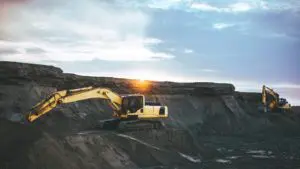Operational and Capital Cost Comparison: Eldorado Gold’s Skouries vs. SHERPA Estimates
Reliable cost estimation remains a cornerstone of sound mine planning, particularly for complex projects that combine open pit and underground development. In this benchmark, we take a closer look at the capital (CAPEX) and operating (OPEX) cost projections for Eldorado Gold’s Skouries Project—a high-profile copper-gold asset in northern Greece—and compare them against modeled estimates generated using Costmine’s SHERPA applications, a fast, accurate, and detailed solution for mining cost analysis. The comparison highlights how differing assumptions and methodologies can significantly impact projected costs, and why benchmarking is essential for evaluating project feasibility.
SHERPA’s Break Down of Operating and Capital Costs
SHERPA’s modeling produced a capital cost estimate of $940 million for Skouries, compared to Eldorado Gold’s reported $845 million. The variance is largely driven by more conservative assumptions around infrastructure, utilities, and indirect costs. SHERPA’s logic includes higher allowances for construction management, contingency, and site infrastructure—areas that are often underdeveloped in early-stage technical reports. On the operating side, SHERPA estimates $40.32 per tonne, significantly above Eldorado’s $26.99 per tonne. These higher modeled costs reflect a broader scope that includes full-cycle overheads, variable energy consumption, and more robust labor assumptions—particularly important for hybrid open pit and underground operations like Skouries.
Eldorado Gold’s Reported Breakdown of Capital and Operating Costs
Eldorado Gold’s cost estimates for Skouries reflect the company’s internal assumptions and project development strategy. With an initial capital cost of $845 million and OPEX at $26.99 per tonne, their plan is likely based on tighter scopes and early-stage engineering assumptions. Differences between their numbers and SHERPA’s model are most noticeable in categories like indirect costs, contingency, and underground mining methods. These gaps underscore the need to pressure-test estimates with external benchmarks to avoid underbudgeting during execution.
Total operating cost comparison (US$/t) between SHERPA and Eldorado Gold
The difference in operating cost estimates—$40.32/t for SHERPA vs. $26.99/t for Eldorado—illustrates the impact of modeling philosophy. SHERPA builds in a wider range of variables, including overhead and full workforce assumptions, while owner-reported estimates often reflect tighter assumptions tied to pre-feasibility or early engineering levels. The nearly $13/t difference is significant enough to affect project NPV and should be carefully considered in risk-adjusted models.
Total capital cost comparison (US$M) between SHERPA and Eldorado Gold
On the capital side, SHERPA’s higher $940 million estimate versus Eldorado’s $845 million stems largely from indirects—areas like camp construction, infrastructure, and project management. These are often discounted or generalized early on but represent real costs that can escalate as the project advances. Including them up front improves planning accuracy and gives developers a better sense of funding needs.
Why Benchmark with SHERPA?
Despite the differences in totals, both estimates dedicate the majority of their costs to mining, processing, and general administration. This overlap suggests that while cost structure assumptions vary, the overall development priorities are aligned. Tools like SHERPA allow users to test these assumptions with real-world cost data and standardized logic—providing a fast, accurate, and detailed way to validate feasibility and flag risks early in the planning process.
SHERPA users benefit from integration with the Mining Cost Service (MCS), which keeps cost models grounded in real data across labor, equipment, and consumables. This is especially critical for complex hybrid projects like Skouries, where assumptions compound quickly.
Learn more about SHERPA here: SHERPA | Costmine Intelligence


























